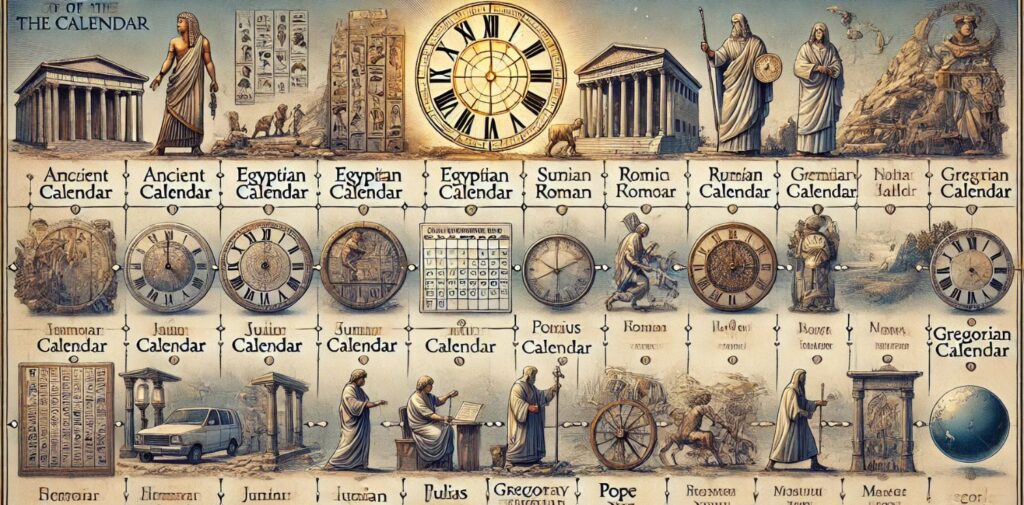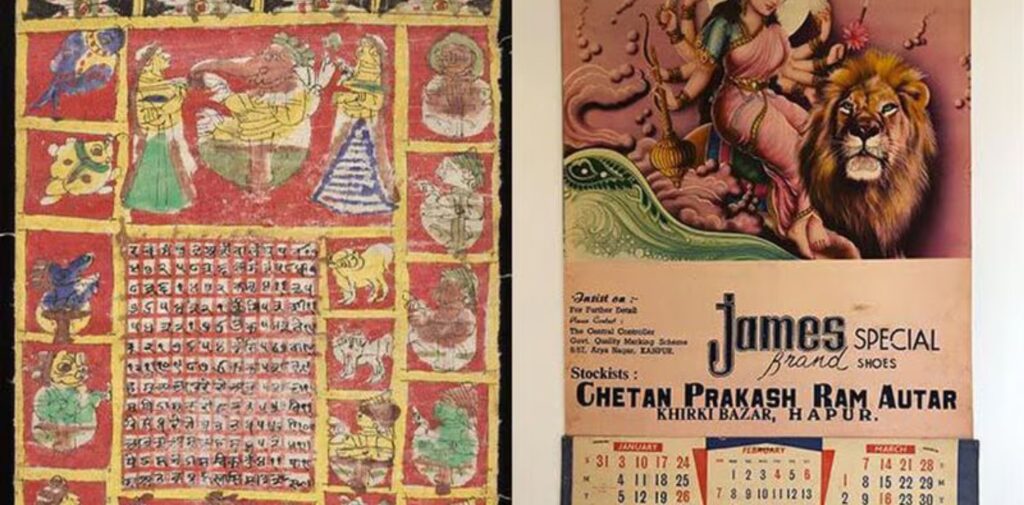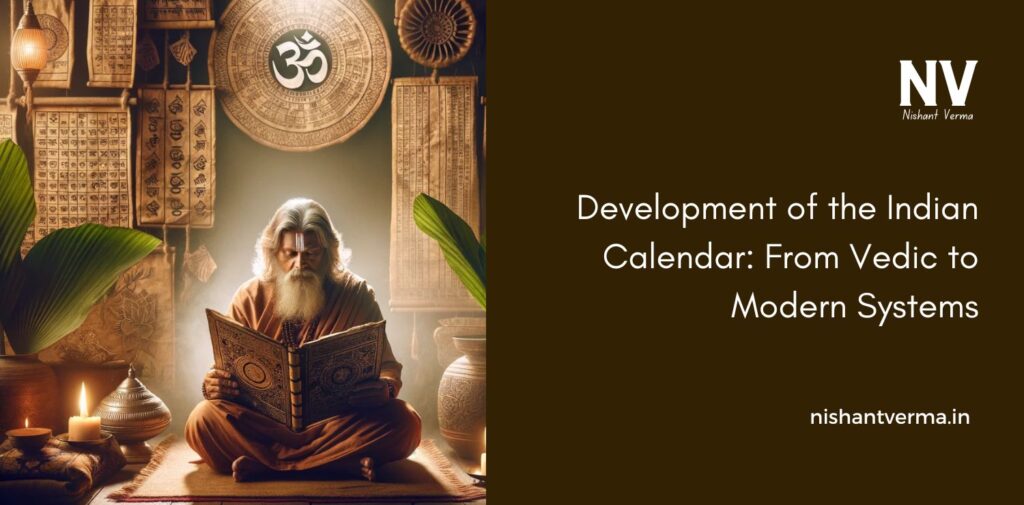Time is an important part of our daily lives. We use Indian Calendar to keep track of days, months, and years. But have you ever wondered how calendars were created and how people in ancient India kept track of time? The development of the Indian calendar is a fascinating journey that has changed over thousands of years. Let’s take a look at how the Indian calendar has evolved from the ancient Vedic period to the modern system we use today.
What is a Calendar?
A calendar is a system used to organize and keep track of time. It divides time into days, weeks, months, and years. People use calendars to plan their daily activities, festivals, and important events. The calendar tells us when to celebrate holidays, mark birthdays, and follow the changing seasons. But did you know that the way people kept track of time in ancient India is very different from the calendars we use today?

Early Beginnings: The Vedic Calendar
The earliest known Indian calendar comes from the Vedic period (around 1500 BCE to 500 BCE). The people of ancient India were very observant of the sky. They noticed the regular movements of the sun, the moon, and the stars. These observations helped them understand time and the changing seasons.
In the Vedic period, the people of India followed a lunar calendar. This means that their months were based on the moon’s cycles. A month in the Vedic calendar was the time it took for the moon to complete one full orbit around the Earth, which is about 29.5 days. As a result, a year in the Vedic calendar had around 354 days, which is shorter than the 365 days we have today.
The Vedic people also divided the year into two parts:
- Uttarayana: The six-month period when the sun moves northward in the sky.
- Dakshinayana: The six-month period when the sun moves southward.
These two periods marked important changes in the seasons, and they were used to determine when people should plant crops, celebrate festivals, and perform religious rituals.
The Solar Calendar: A New System
While the Vedic calendar was based on the moon, the people of ancient India also recognized the importance of the sun. Over time, they developed a solar calendar to better match the seasons. A solar year is based on the Earth’s orbit around the sun, which takes about 365.25 days.
The solar calendar became more popular because it was closely tied to the changing seasons, which were important for farming and agriculture. This system was used to track the movement of the sun through the 12 zodiac signs, each corresponding to one month. These signs are the same ones used in modern astrology.
The Indian solar calendar eventually became more refined with the creation of the Saka Era, which started in 78 CE. The Saka calendar was used by kings and rulers in India, and it helped organize dates for important events and ceremonies.
The Hindu Lunisolar Calendar
While India had both lunar and solar calendars, the most commonly used calendar in ancient India was the lunisolar calendar. This means that it combined both the lunar and solar systems. In the Hindu lunisolar calendar, months were based on the moon’s cycle, but the year was adjusted to the sun’s cycle to keep the calendar in sync with the seasons.
In this system, the months alternated between lunar and solar months. To keep the calendar accurate, an extra month, called the Adhik Maas, was added every two or three years. This extra month ensured that the calendar stayed in harmony with the solar year.
The lunisolar calendar is still used today for many traditional Indian festivals and religious celebrations. It is the basis for popular festivals like Diwali, Holi, and Navratri. These festivals are celebrated according to the dates of the lunisolar calendar, which may not match the dates of the Gregorian calendar.

The Gregorian Calendar: A Global Standard
In the 16th century, the world began to adopt the Gregorian calendar, a solar calendar introduced by Pope Gregory XIII. This calendar was designed to correct errors in the older Julian calendar, which had made the dates of important events like the equinoxes and solstices drift over time. The Gregorian calendar has 12 months, and a year is exactly 365.25 days, with an extra day added every four years as a leap year to keep the calendar accurate.
In India, the Gregorian calendar was introduced during British rule in the 19th century. It became the official calendar for administrative and government purposes. The Gregorian calendar is now used worldwide for most daily activities, including business, education, and holidays. In India, it is used alongside the traditional Indian calendar for secular purposes, such as public holidays and official events.
The Indian National Calendar
While the Gregorian calendar is commonly used in India today, there is also an Indian National Calendar that was adopted in 1957. The Indian National Calendar is based on the Saka calendar that we mentioned earlier. It uses the same system of months, but it starts from the year 78 CE, the beginning of the Saka Era.
The Indian National Calendar has 12 months:
- Chaitra
- Vaishakha
- Jyaistha
- Ashadha
- Shravana
- Bhadrapada
- Ashwin
- Kartika
- Margashirsha
- Pausha
- Magha
- Phalguna
The months of the Indian National Calendar are aligned with the solar year, just like the Gregorian calendar. It is used mainly for government purposes and to calculate the dates for important festivals like Independence Day (15th August) and Republic Day (26th January).

The Role of Indian Calendars in Today’s World
Today, many people in India use the Gregorian calendar for their daily activities, but traditional Indian calendars are still important for cultural and religious reasons. People follow the lunisolar calendar to celebrate festivals, and the Indian National Calendar is used by the government for official purposes.
The development of the Indian calendar has played a huge role in the way people live and plan their lives. From the ancient Vedic calendar to the modern systems used today, the calendar has been essential for organizing time, tracking the seasons, and celebrating important events.
Conclusion
The development of the Indian calendar is a fascinating journey through history. From the early Vedic lunar calendar to the advanced lunisolar and solar systems, the Indian calendar has evolved to meet the needs of society. The influence of Indian calendars can still be seen today in the festivals and traditions that are celebrated all over India. The combination of scientific observation, religious beliefs, and cultural practices has made the Indian calendar one of the oldest and most interesting timekeeping systems in the world. So, the next time you look at your calendar, remember that it has a long history that began thousands of years ago in ancient India!




